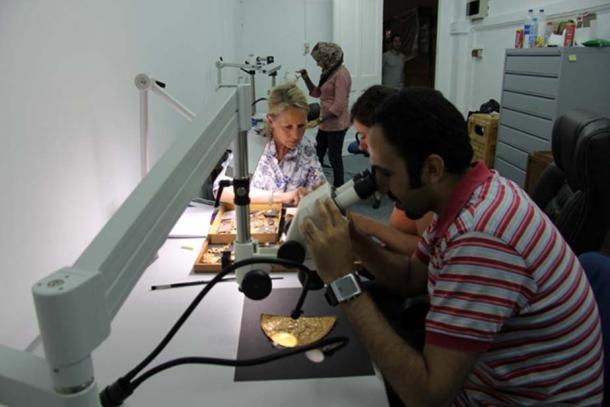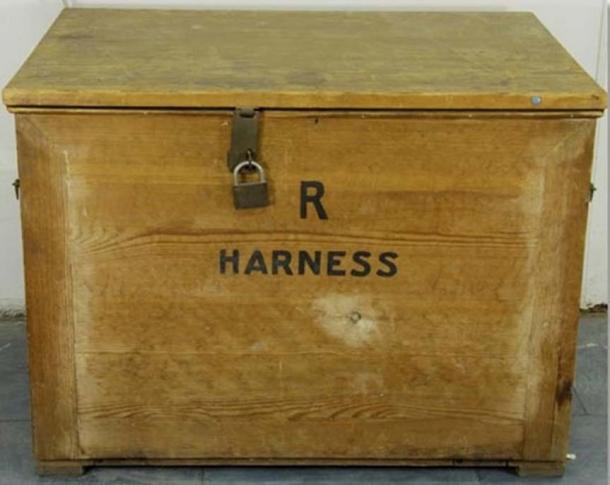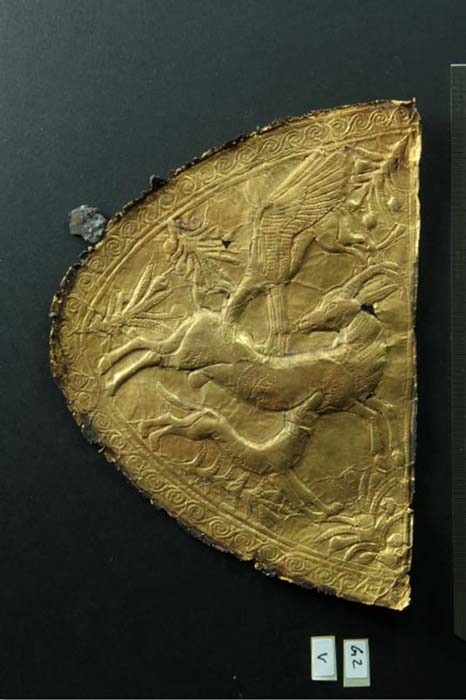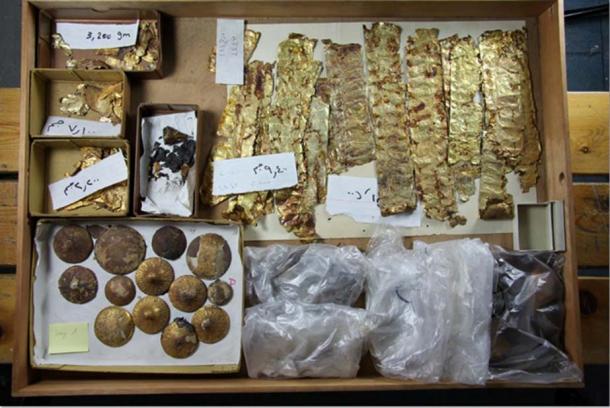Treasures from Tutankhamun's Tomb Reveal Surprising Cross-Cultural Links
As part of a German-Egyptian project, archaeologists from Tübingen for the first time examine embossed gold applications from the sensational find of 1922. The motifs indicate surprising links between the Levant and the Egypt of the pharaohs.
Researchers from Tübingen working on a German-Egyptian project have examined embossed gold applications from the treasure of the tomb of the pharaoh Tutankhamun for the first time. The objects come from the famed find made by English archaeologist Howard Carter in 1922. Until now, they had been held in storage at the Egyptian Museum Cairo. They can be seen at a special exhibition at the museum which began on Wednesday. Conservators and archaeologists of the Institute of Ancient Near Eastern Studies (IANES, Professor Peter Pfälzner), the German Archaeological Institute, Cairo, (DAI, Professor Stephan Seidlmayer), and the Römisch-Germanischen Zentralmuseums Mainz (RGZM, Professor Falko Daim), as well as the Egyptian Museum have spent four years (2013-2017) analyzing the find.

A German-Egyptian team examines objects from the find at the tomb of Tutankhamun. (Credit: Christian Eckmann; Copyright: RGZM, DAI Cairo and University of Tübingen )
Through painstaking hours in the lab, the partners restored the objects at the Egyptian Museum. They also made drawings of the items and did comprehensive research on them. A team of conservators, Egyptologists and specialists in Near Eastern archaeology found the embossed gold applications in the same crate they were placed by Howard Carter's team immediately after their discovery. At the time, the artefacts were photographed and packed, unrestored, and were never again removed until this project.
- Enigma of the Heartless Pharaoh: Who Stole the Heart of King Tut, and Why?
- Unraveling Tutankhamun’s Final Secret: Cloak of Mysteries Reside in a Sepulchral Masterpiece–Part I

After Howard Carter’s sensational find, the embossed gold applications were stored in this box. They were analysed for the first time in 2013. (Credit: Christian Eckmann; Copyright: RGZM, DAI Cairo and University of Tübingen )
During years of detail work, conservators Christian Eckmann and Katja Broschat of the Römisch-Germanischen Zentralmuseum Mainz reassembled the fragments to produce 100 nearly complete embossed gold applications. They suspect the items are decorative fittings for bow cases, quivers and bridles. IANES archaeologists from Tübingen examined the images on the embossed gold applications and categorized them from an art-historical perspective. In her dissertation, doctoral candidate Julia Bertsch succeeded in distinguishing the Egyptian motifs on the embossed gold applications from those that could be ascribed to an "international," Middle Eastern canon of motifs.
- Instruments of Mass Destruction: Do Tutankhamun’s Trumpets Really Summon War?
- Sea-Farers from the Levant the first to set foot in the Americas: proto-Sinaitic inscriptions found along the coast of Uruguay

Embossed gold application with motif of animal combat of Levantine origin. (Credit: Christian Eckmann; Copyright: RGZM, DAI Cairo and University of Tübingen )
Among these are images of fighting animals and goats at the tree of life that are foreign to Egyptian art and must have come to Egypt from the Levant. "Presumably these motifs, which were once developed in Mesopotamia, made their way to the Mediterranean region and Egypt via Syria," explains Peter Pfälzner. "This again shows the great role that ancient Syria played in the dissemination of culture during the Bronze Age."
Interestingly, he adds, similar embossed gold applications with thematically comparable images were found in a tomb in the Syrian Royal city of Qatna. There, the team of archaeologists from Tübingen led by Pfälzner, discovered a pristine king's grave in 2002. It dates back to the time of around 1340 BC, so it is just a bit older than Tutankhamun's tomb in Egypt. The archaeologist says, "This remarkable aspect provided the impetus for our project on the Egyptian finds." Now," says Pfälzner, "we need to solve the riddle of how the foreign motifs on the embossed gold applications came to be adopted in Egypt." The professor says that here, chemical analyses have been illuminating. "The results showed that the embossed gold applications with Egyptian motifs and the others with foreign motifs were made of gold of differing compositions," he says. "That does not necessarily mean the pieces were imported. It may be that various local workshops were responsible for producing objects in various styles -- and that one used Near Eastern models."
- Analyzing Mummy Genes: Were Ancient Egyptians closely Related to Middle Easterners?
- Mysterious Origins – What we don’t know about the emergence of humans

Fragments from a tomb: The embossed gold applications presumably served as decorative fittings for bow cases, quivers and bridles. (Credit: Christian Eckmann; Copyright: RGZM, DAI Cairo and University of Tübingen )
After the current initial exhibition of these objects in Cairo, they will be on display in future in the new Grand Egyptian Museum close to the pyramids at Giza. Now, almost a century after they were discovered, and thanks to the work of archaeologists from Tübingen and Egyptologists and conservators from Mainz and Cairo, the scientific analysis of these artifacts from one of Egypt's most sensational archaeological finds has been completed.
The German Foreign Office and the German Research Foundation (DFG) funded the work.
Top image: Fragments from a tomb: 100 entire embossed gold applications were ultimately assembled. (Credit: Christian Eckmann; Copyright: RGZM, DAI Cairo and University of Tübingen )
The article, originally titled ’New treasures from Tutankhamun's tomb,’ was originally published on Science Daily.
Source: University of Tübingen. "New treasures from Tutankhamun's tomb." ScienceDaily. ScienceDaily, 16 November 2017. www.sciencedaily.com/releases/2017/11/171116105129.htm
















